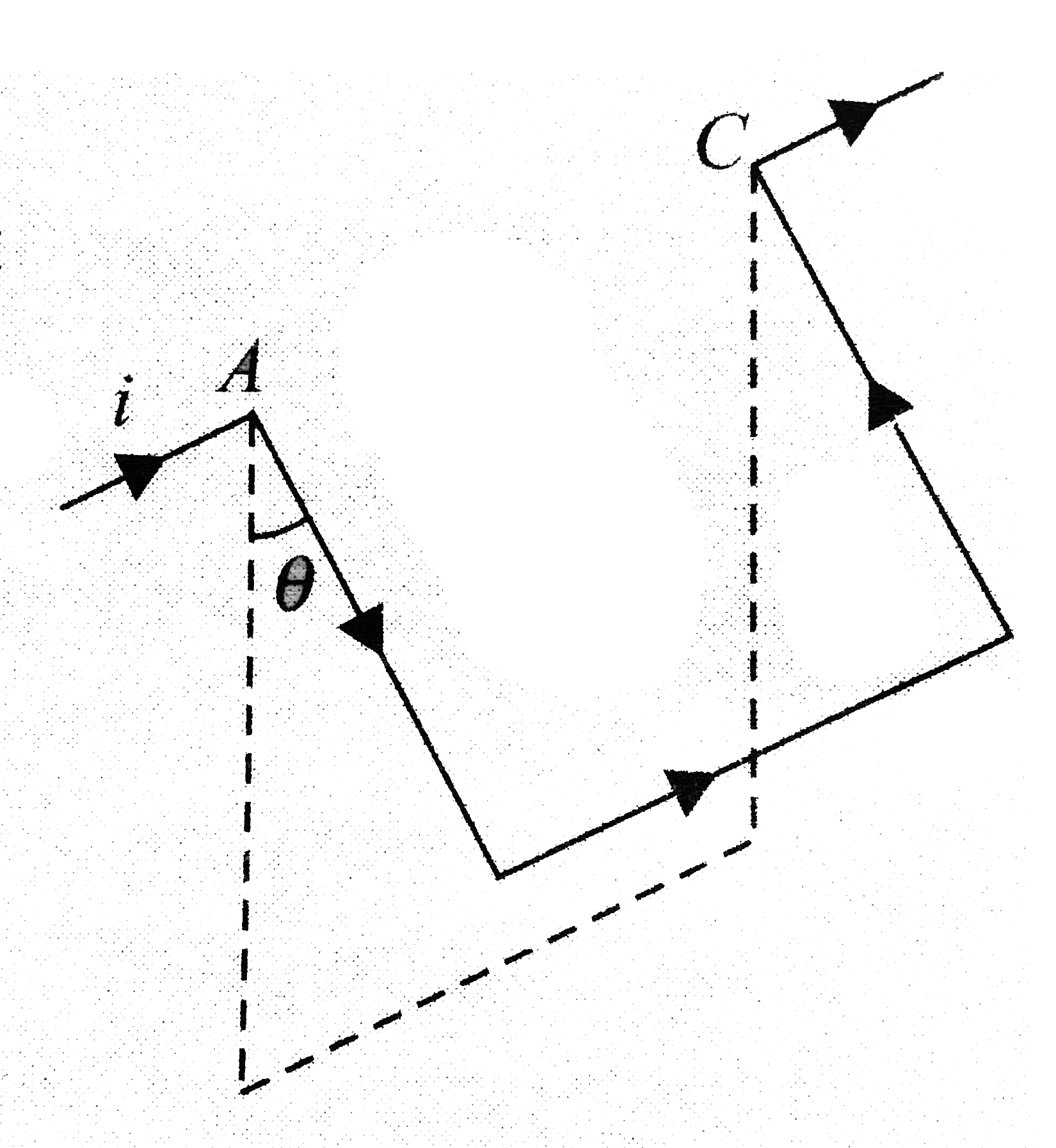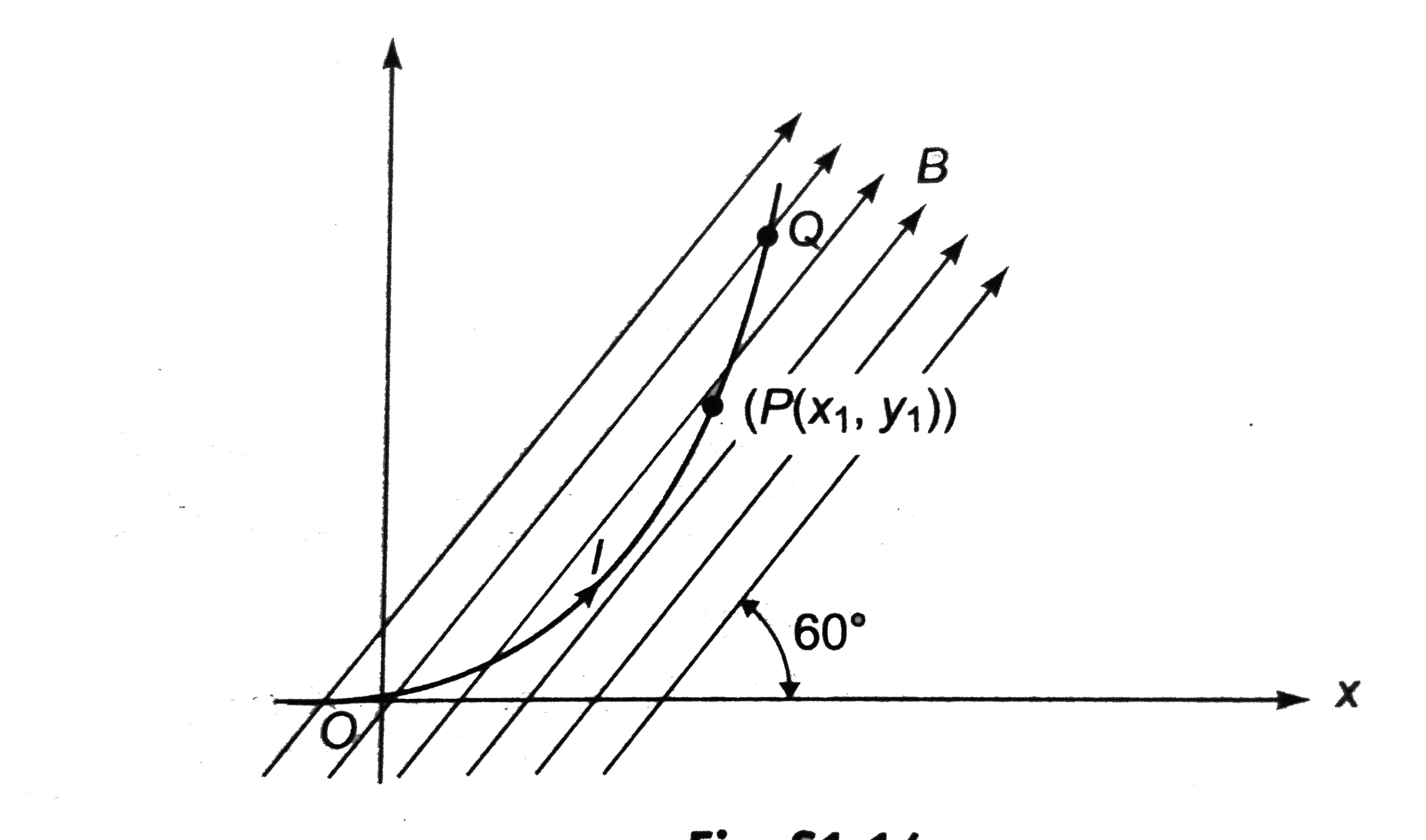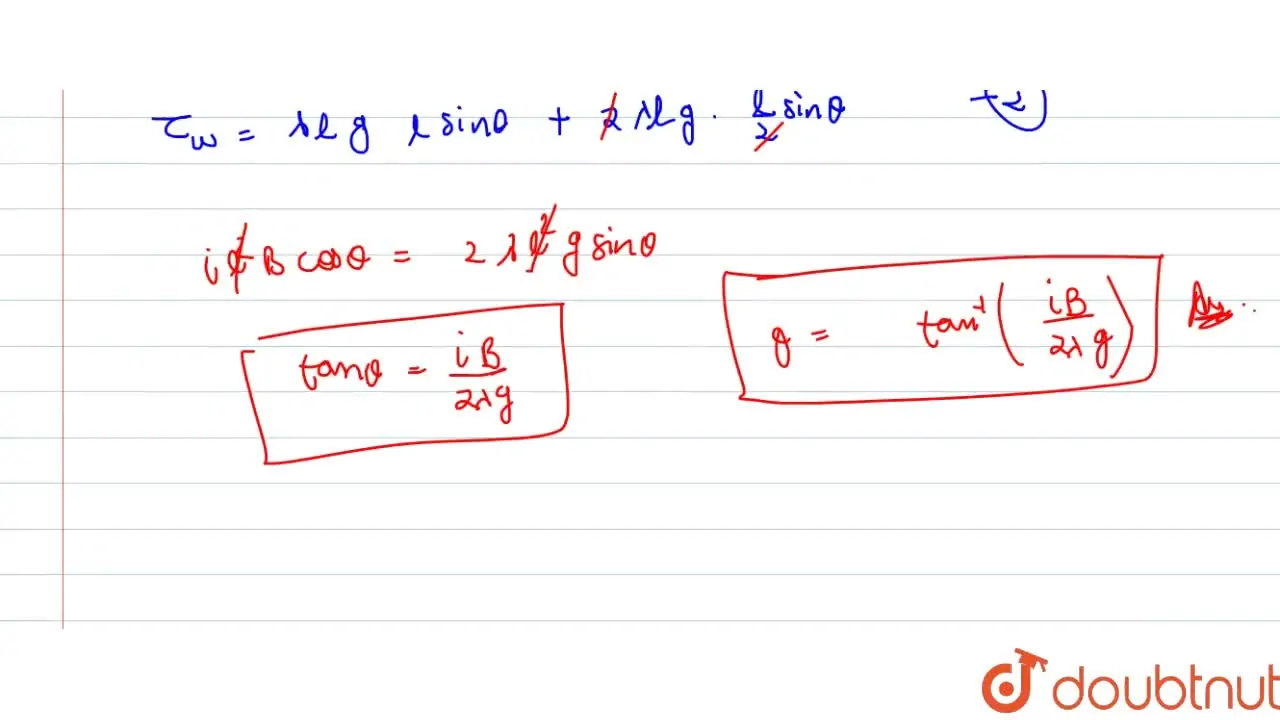In Fig. a three-side frame is pivoted at AC and hangs vertically. Its sides are each of the same length and have a linear density of 0.10kgm−1. A current of 10.0 A is sent through the frame, which is in a uniform magnetic field of 10 mT directed upward. Through what angle will the frame be deflected?

Refracting to the figure in question, we note that the magnetic forces on the slanting sides are parallel to AC and therefore, do not produce any torque about the axis AC. The magnetic force on the horizontal side of the frame is
Fmag=iL×B...(i)
This force has magnitude Fmag=iLBsin90∘=iLB and points horizontally to the right on this plane of this figure, perpendicular to L and B. The magnetic torque about AC has magnitude
Tm=iLB(Lcosθ)=iL2Bcosθ....(ii)
and tends to increase the angle θ. The gravitational torque about
the axis AC is
Tg=−[(λL)g(Lsinθ)+2(λL)]
g(12Lsinθ).....(iii)
where the minus sign indicates that gravity tends to turn the frame in the direction of decreasing θ. Let λ denote the mass per unit length of the wire. In equilibrium, the torque evaluted in equations (ii) and (iii) must cancel, which implies that tanθ=(Bi)/(2λg).

Subtituting the data, we obtain θ=tan−1(Bi2λg).
Related Playlists
- BOOK - CENGAGE PHYSICSCHAPTER - MAGNETIC FIELD AND MAGNETIC FORCESEXERCISE - Exercise1.314videos
MAGNETIC FIELD AND MAGNETIC FORCES
- BOOK - CENGAGE PHYSICSCHAPTER - MAGNETIC FIELD AND MAGNETIC FORCESEXERCISE - Exercises Subjective10videos
MAGNETIC FIELD AND MAGNETIC FORCES
- BOOK - CENGAGE PHYSICSCHAPTER - MAGNETIC FIELD AND MAGNETIC FORCESEXERCISE - Exercise 1.122videos
MAGNETIC FIELD AND MAGNETIC FORCES
- BOOK - CENGAGE PHYSICSCHAPTER - KINETIC THEORYEXERCISE - Question Bank31videos
KINETIC THEORY
- BOOK - CENGAGE PHYSICSCHAPTER - Magnetism and MatterEXERCISE - Question Bank50videos
Magnetism and Matter
Similar Questions
The magnetic force per unit length on a wire carrying a current of 10 A and making an angle of 45∘ with the direction of a uniform magnetic field of 0.20 T is
View SolutionThe magnetic force per unit length on a wire carrying a current of 10 A and making an angle of 45∘ with the direction of a uniform magnetic field of 0.20 T is
View SolutionA current of 10 ampere is flowing in a wire of length 1.5m. A force of 15N acts on it when it is placed in a uniform magnetic field of 2 tesla. The angle between the magnetic field and the direction of the current is
View SolutionA straight wire of length 2 m carries a current of 10 A. If this wire is placed in uniform magnetic field of 0.15 T making an angle of 45∘ with the magnetic field, the applied force on the wire will he
View SolutionA straight wire of length 2m carries a current of 10A. If this wire is placed in a uniform magnetic field of 0.15T making an angle of 45∘ with the magnetic field, the applied force on the wire will be
View SolutionA straight wire of length 2 m carries a current of 10 A. If this wire is placed in a uniform magnetic field of 0.15 T making an angle of 45∘ with the magnetic field, the applied force on the wire will be
View SolutionA wire frame is in the shape of a regular polygon of 2016 sides. Each side is of length L=1 cm. If a current I=5.0 A is given to the wire frame estimate the magnetic induction field (B) at the centre of the polygon. [Takeπ2=10.08]
View SolutionA current of 2.0 amp is flowing through a wire of length 50 cm. If this wire be placed at an angle of 60∘ with the direction of a uniform magnetic field of 5.0×10−4 N/Am the force on the wire will be-
View SolutionA solenoid is 1.0 metre long and it has 4250 turns. If a current of 5.0 ampere is flowing through it, what is the magnetic field at its centre [μ0=4π×10−7Weber/amp−m]
View SolutionA current of 2 ampere is flowing through a coil of radius 0.1 m and having 10 turns. The magnetic moment of the coil will be :
View Solution


